Yesterday I met up with the Titus Andronicus cast and crew and photographed their performance at the Edinburgh Fringe. If you want a really bloody show, then this is what you are looking for. A modern take on this old Shakespeare play.

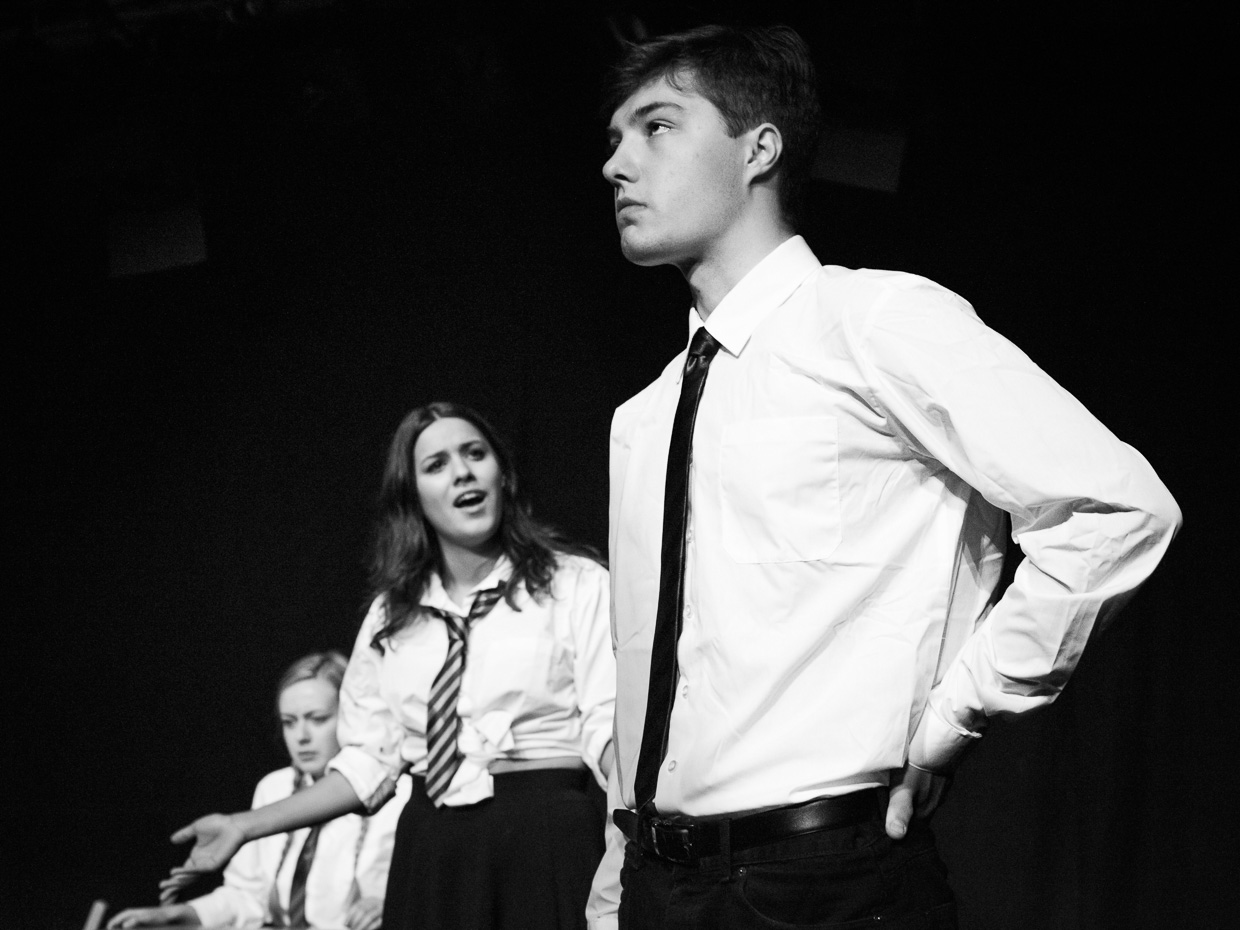
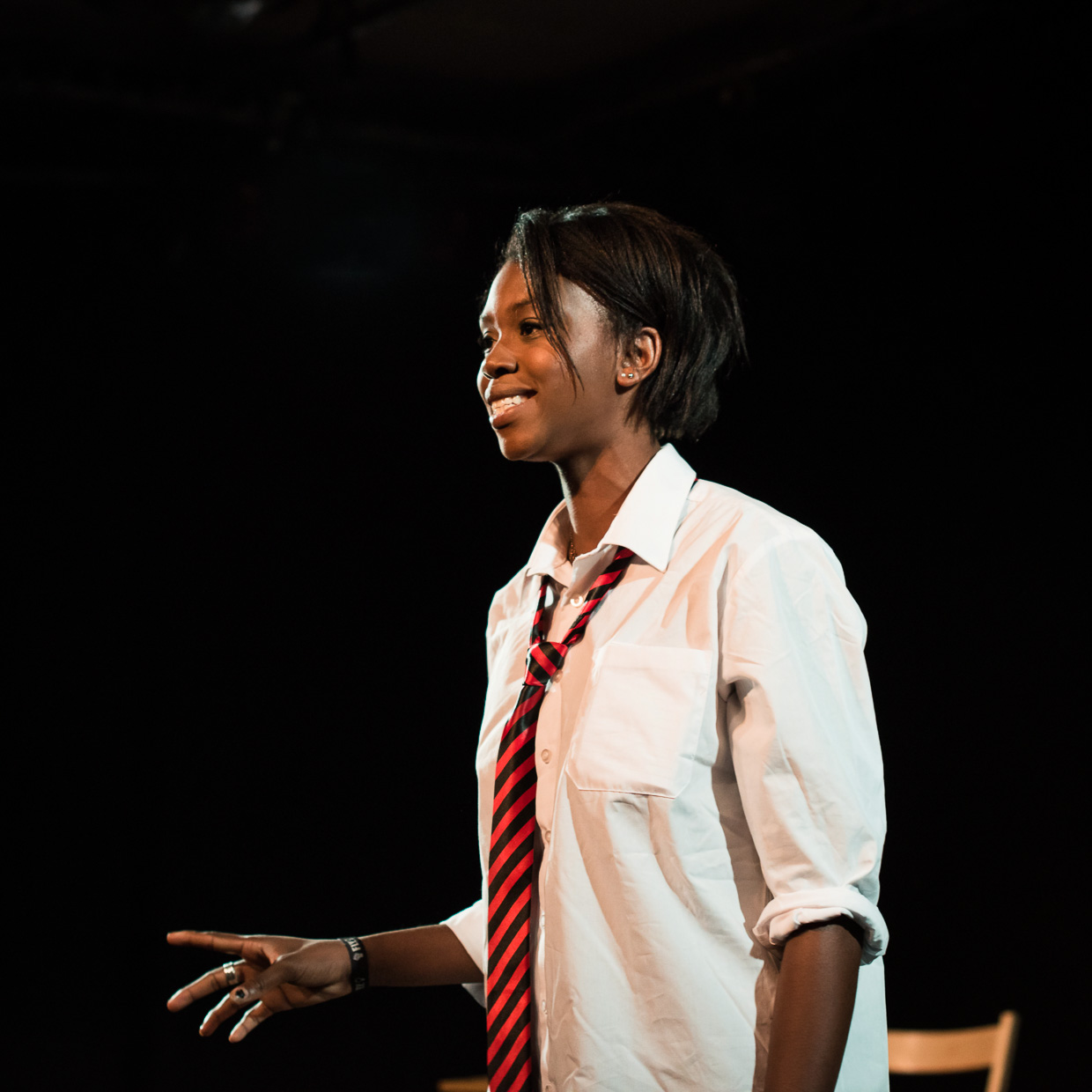
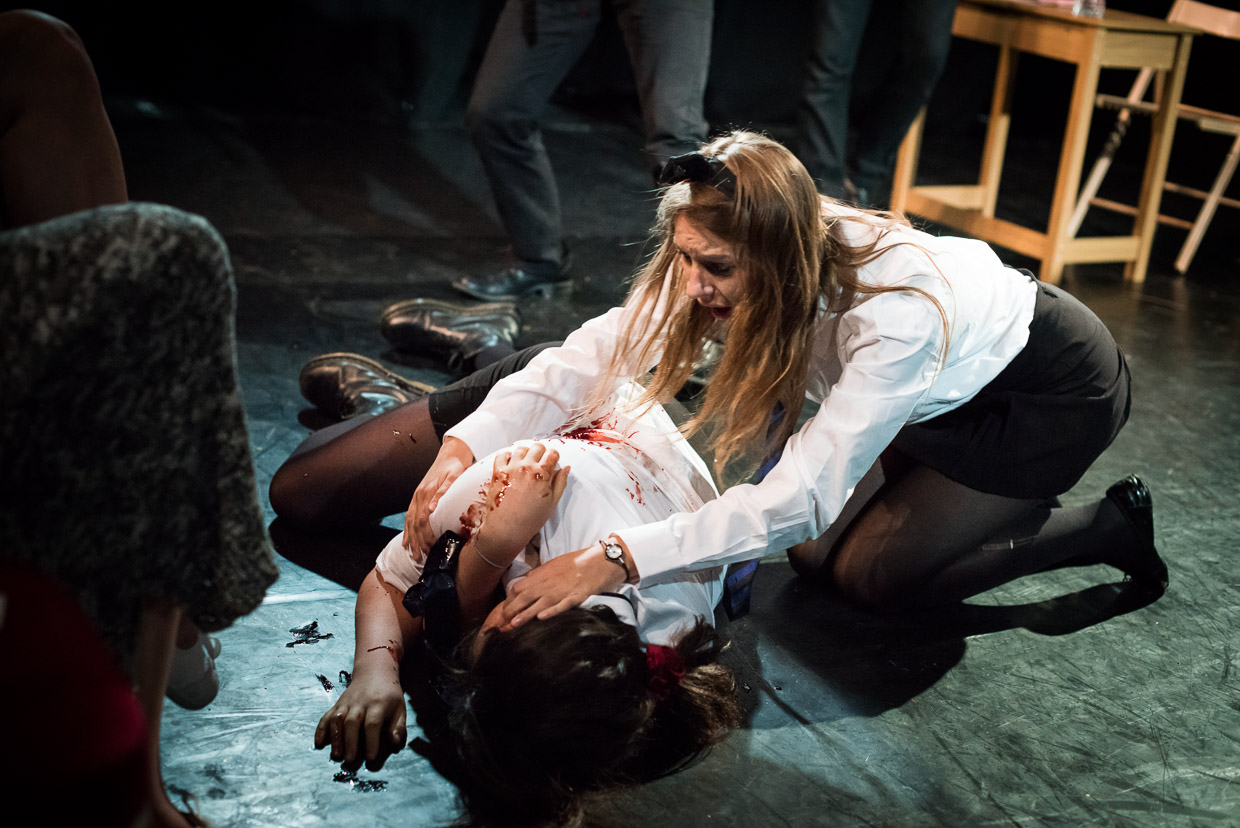
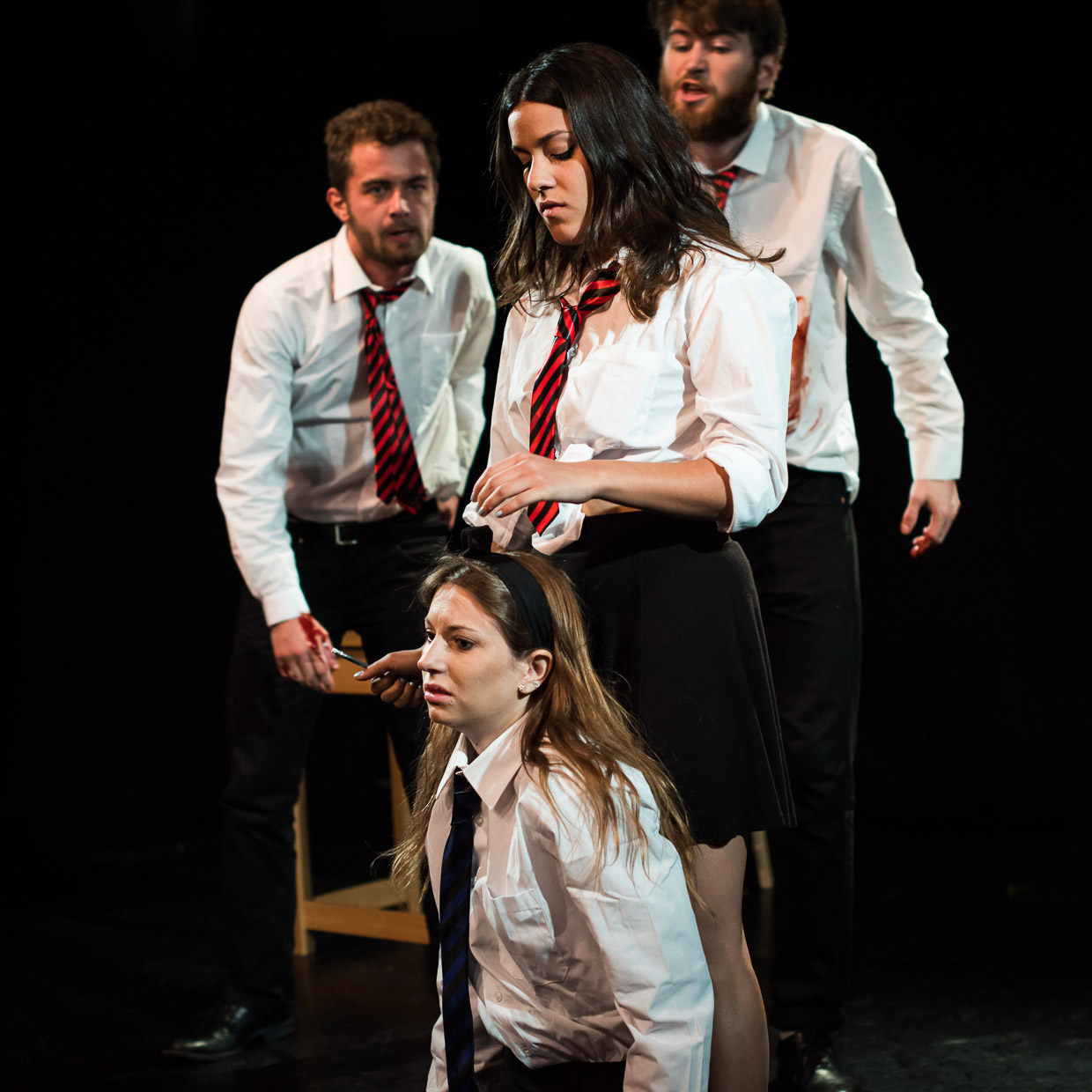
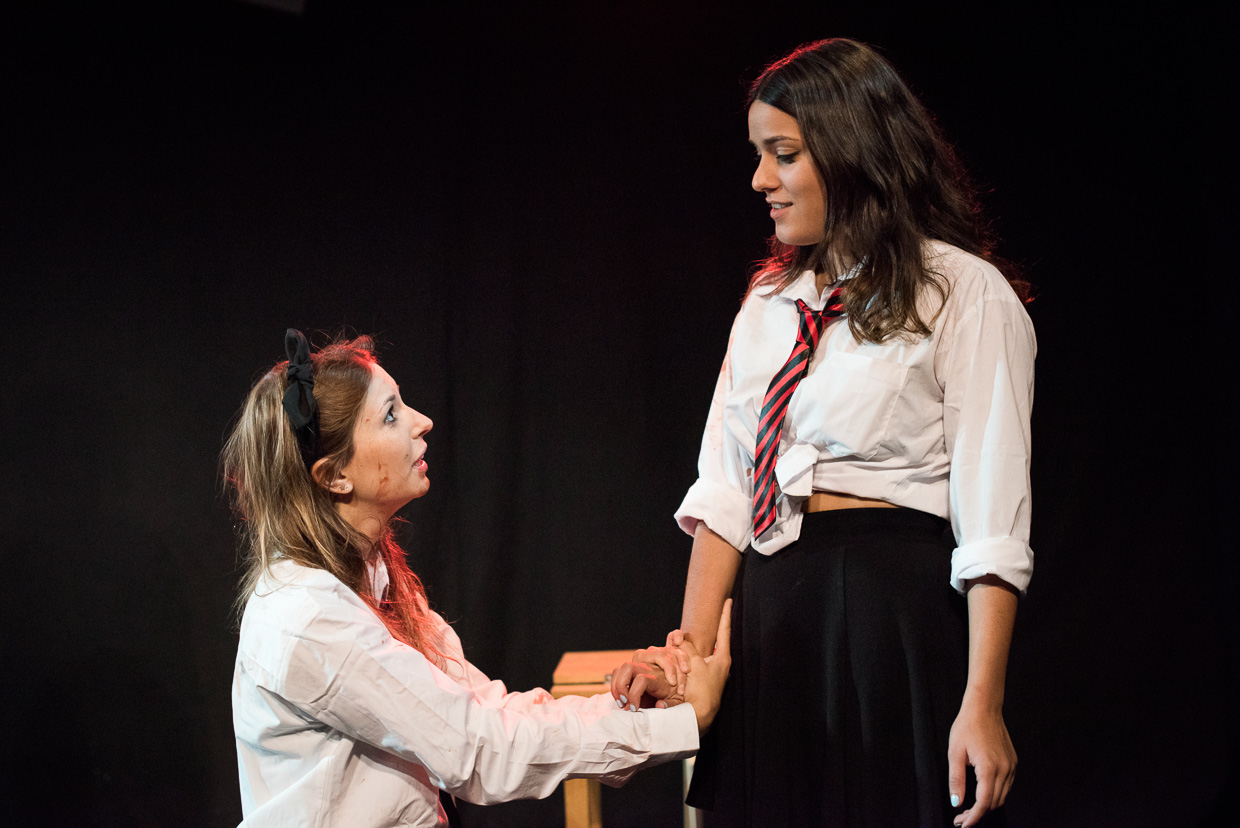
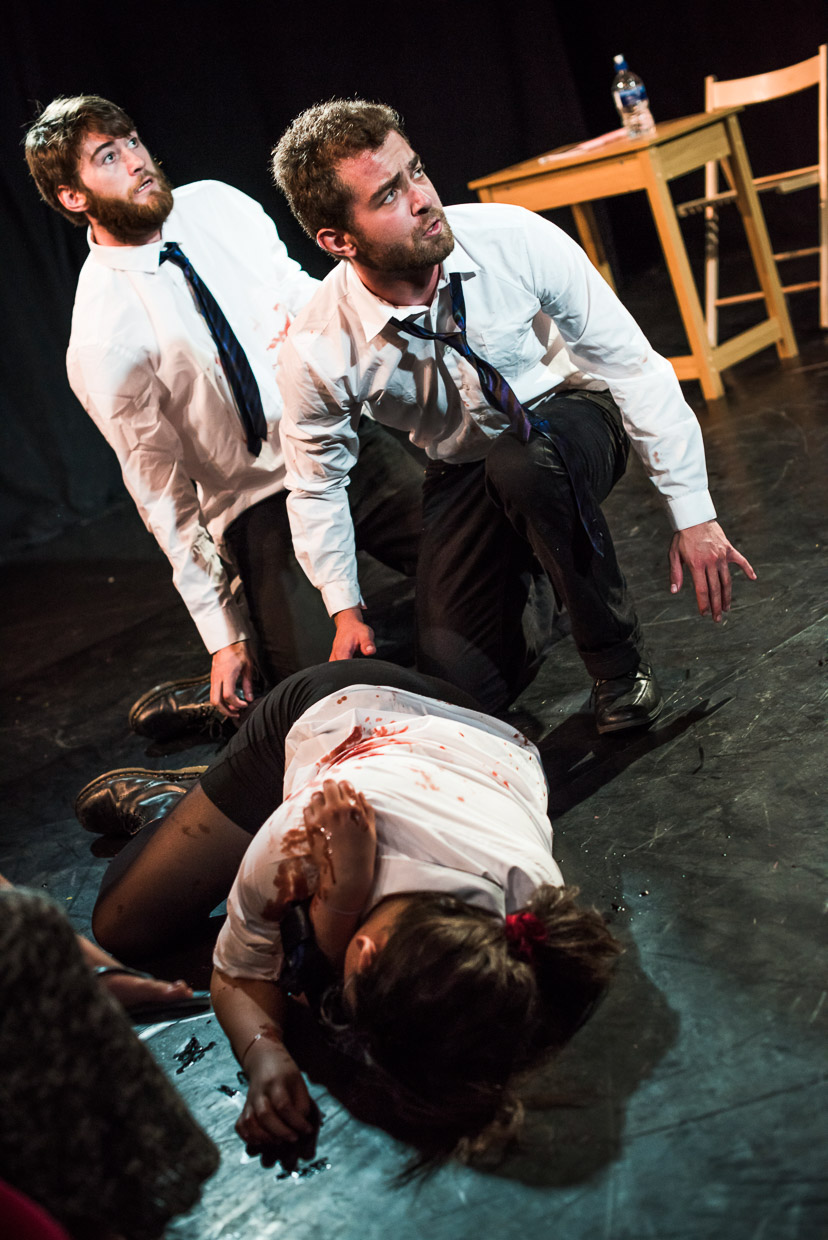
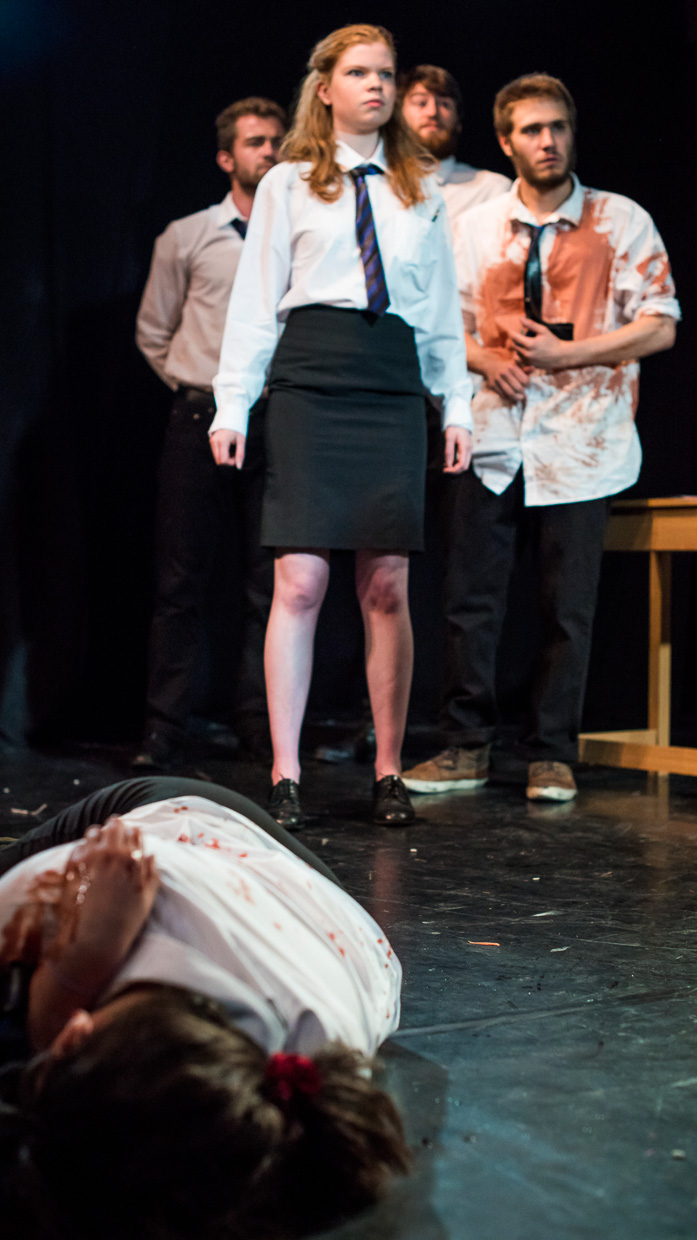
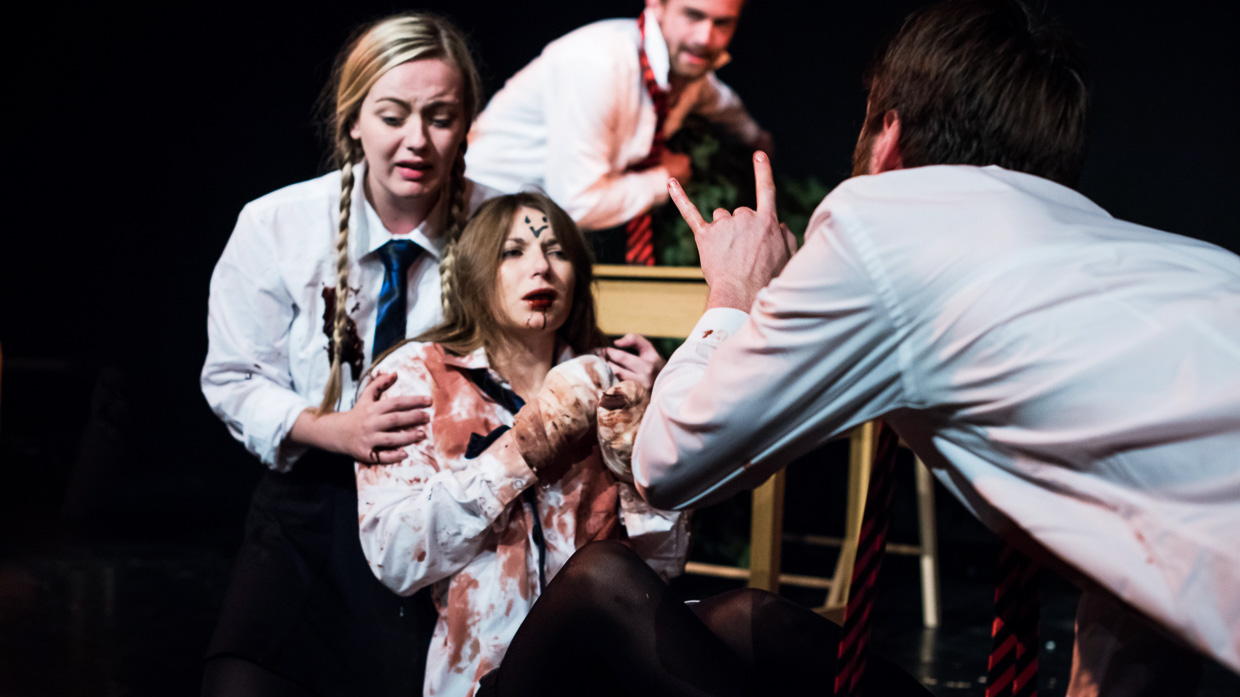

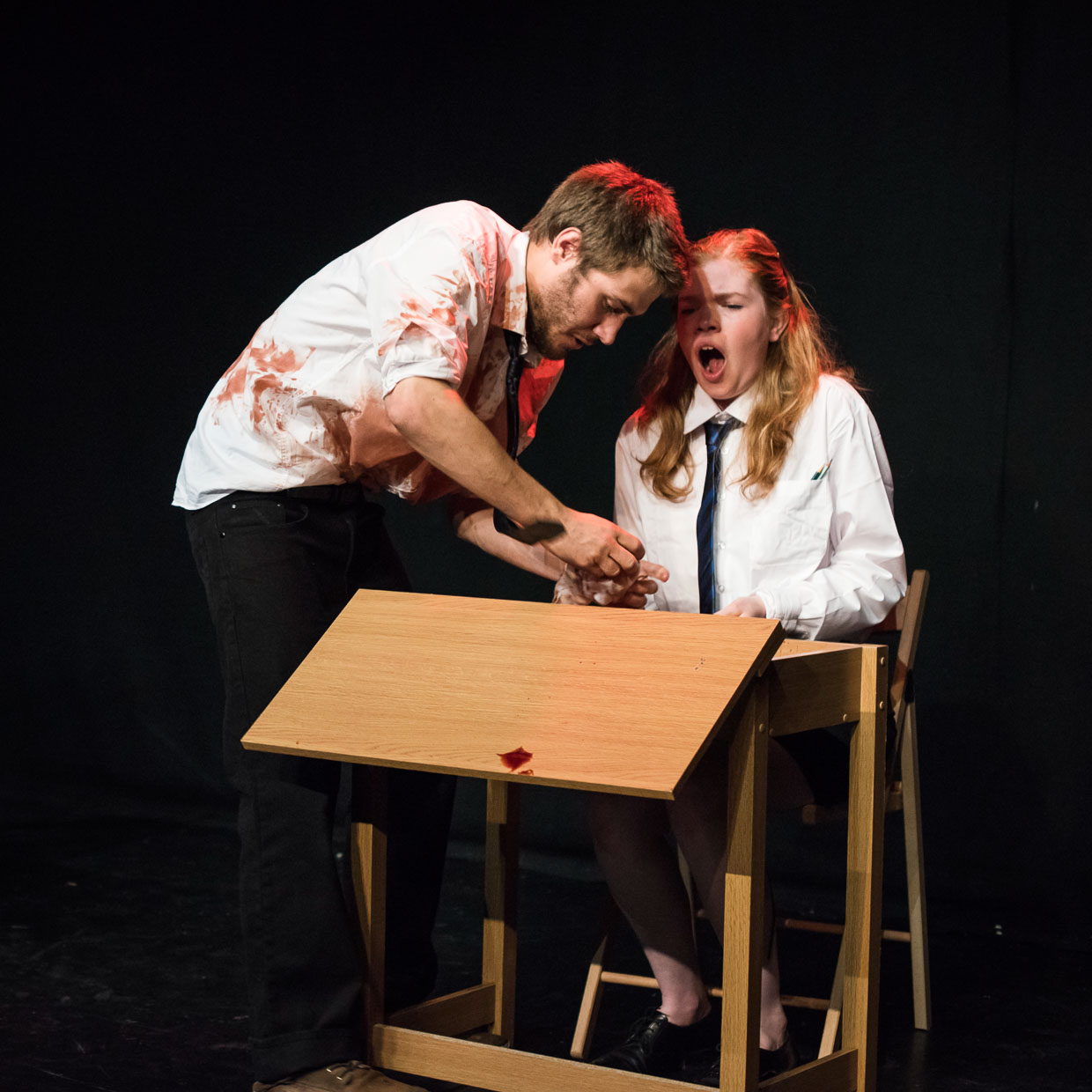

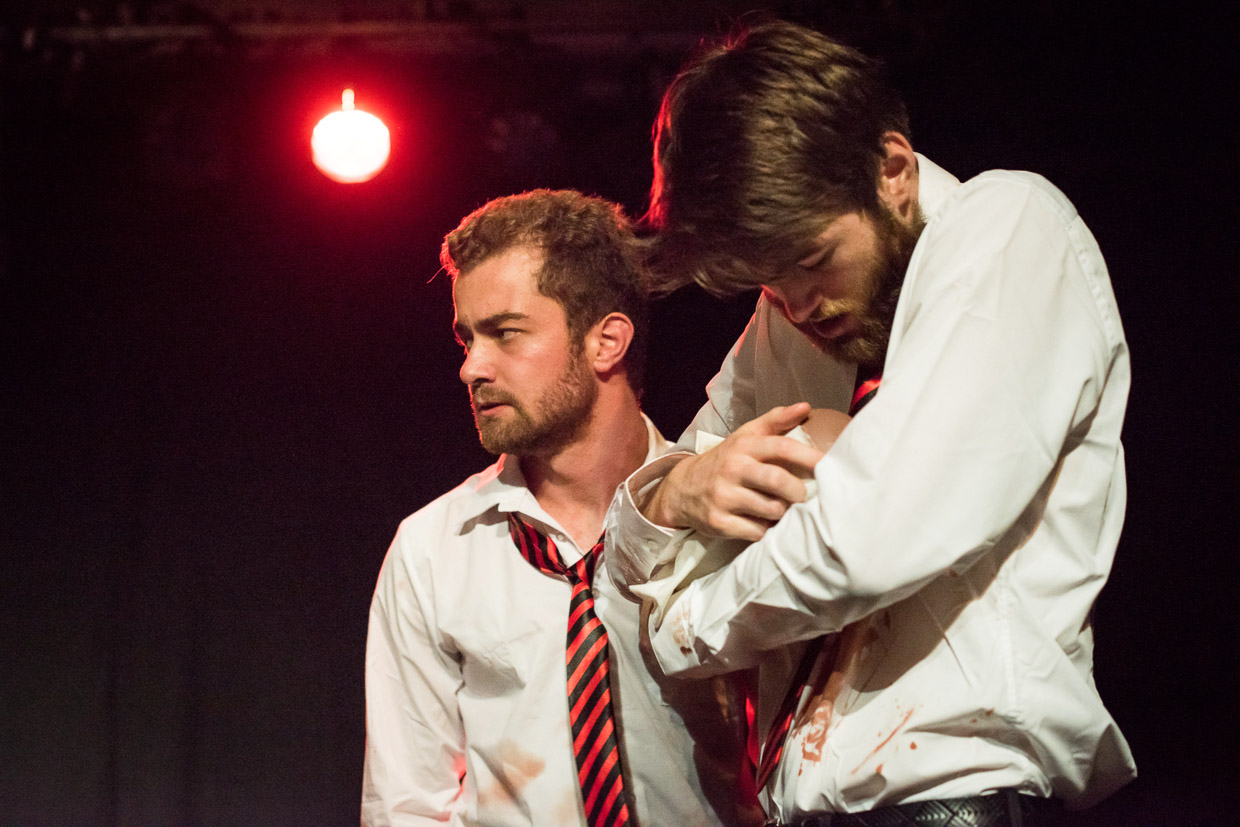
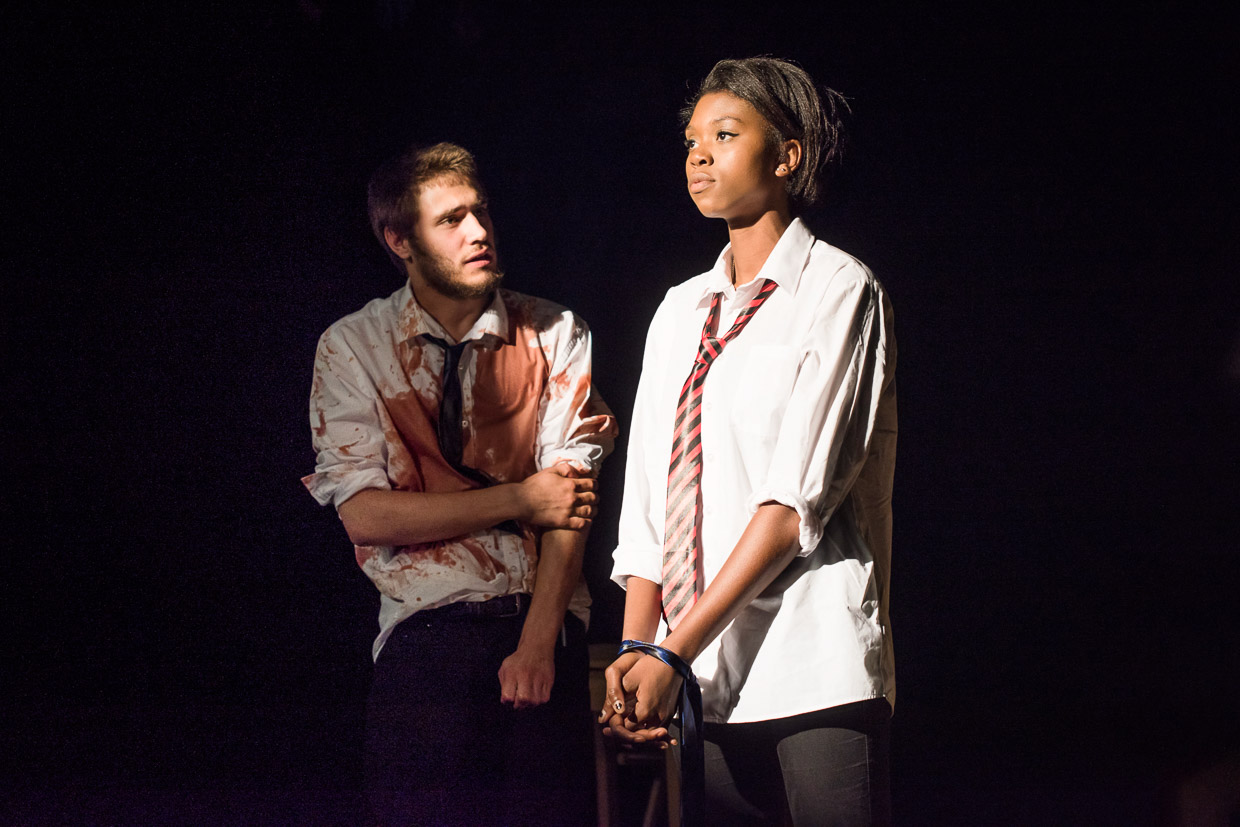
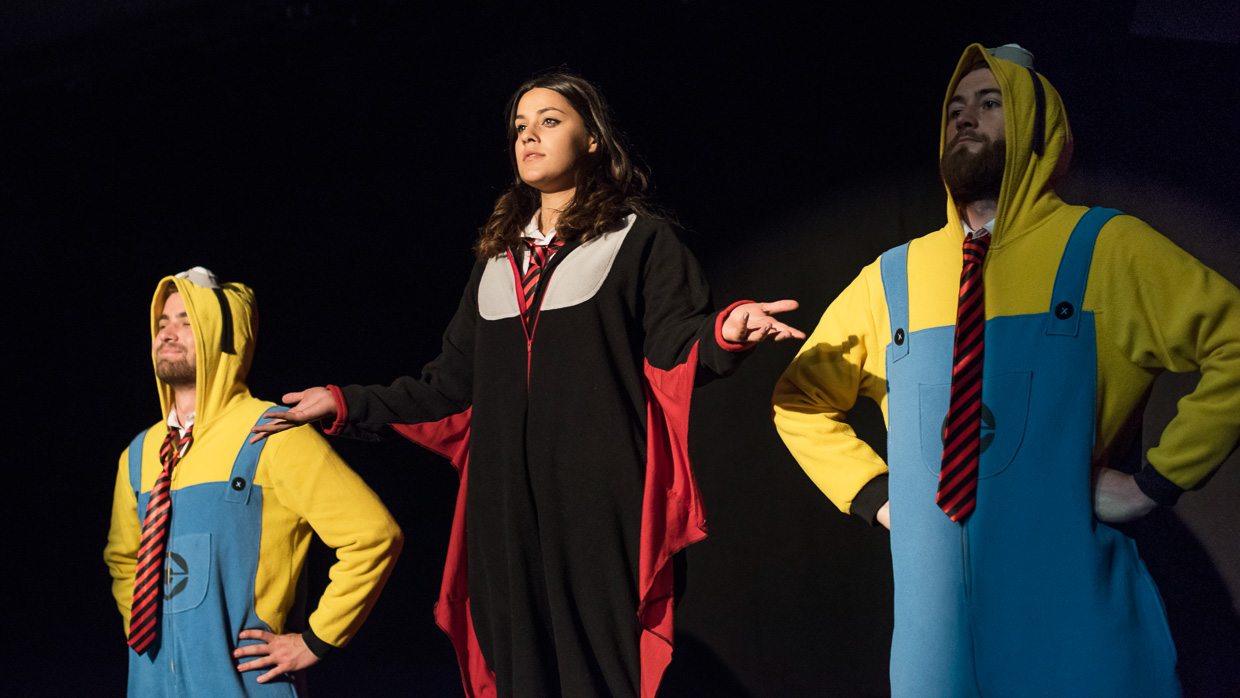
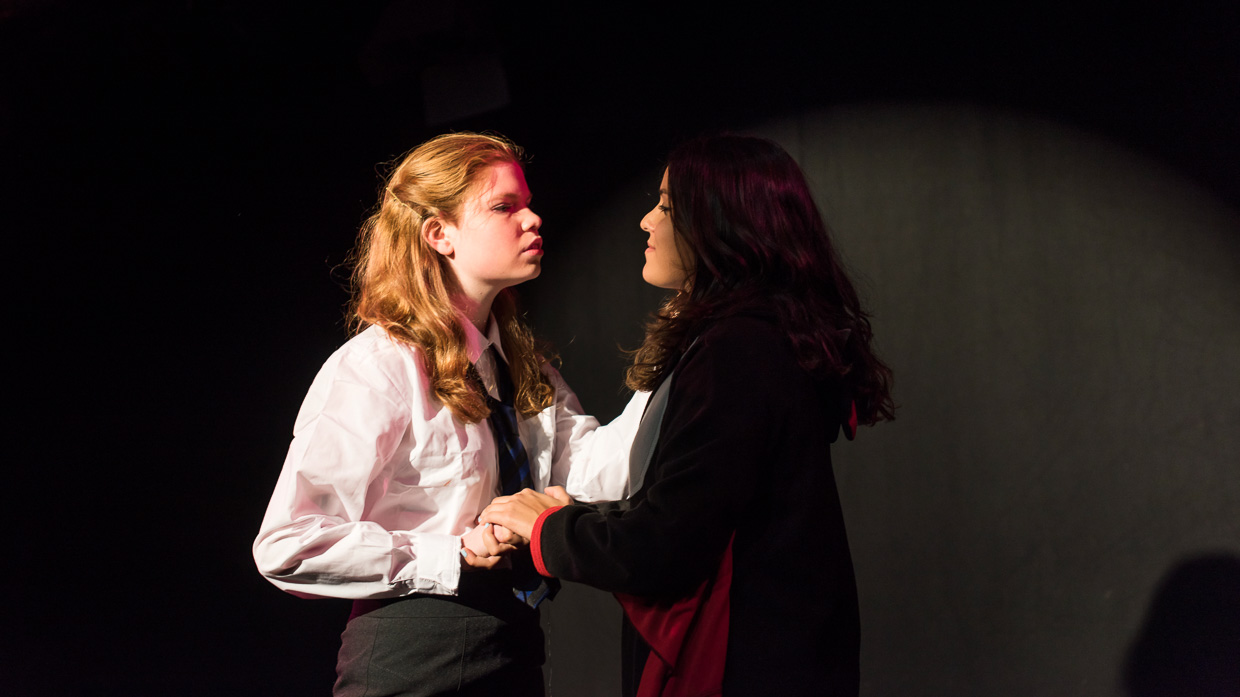
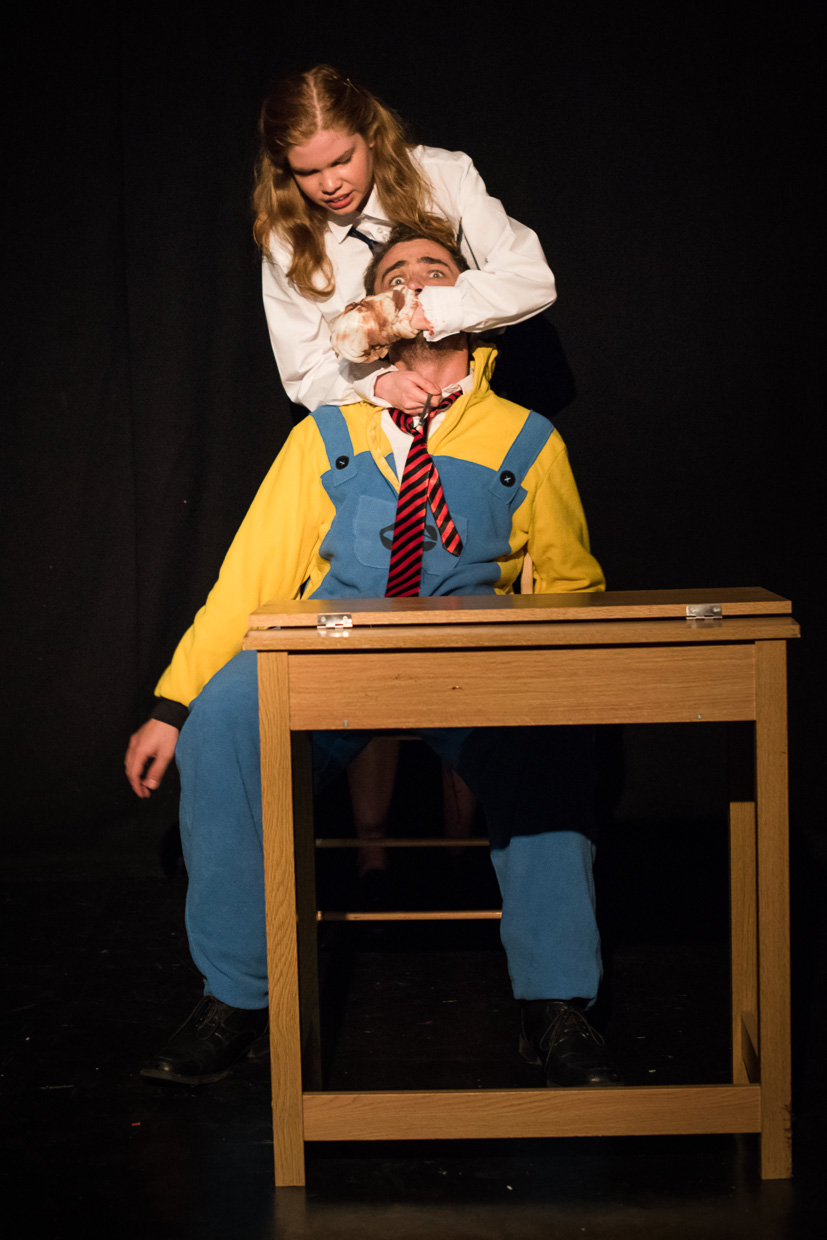
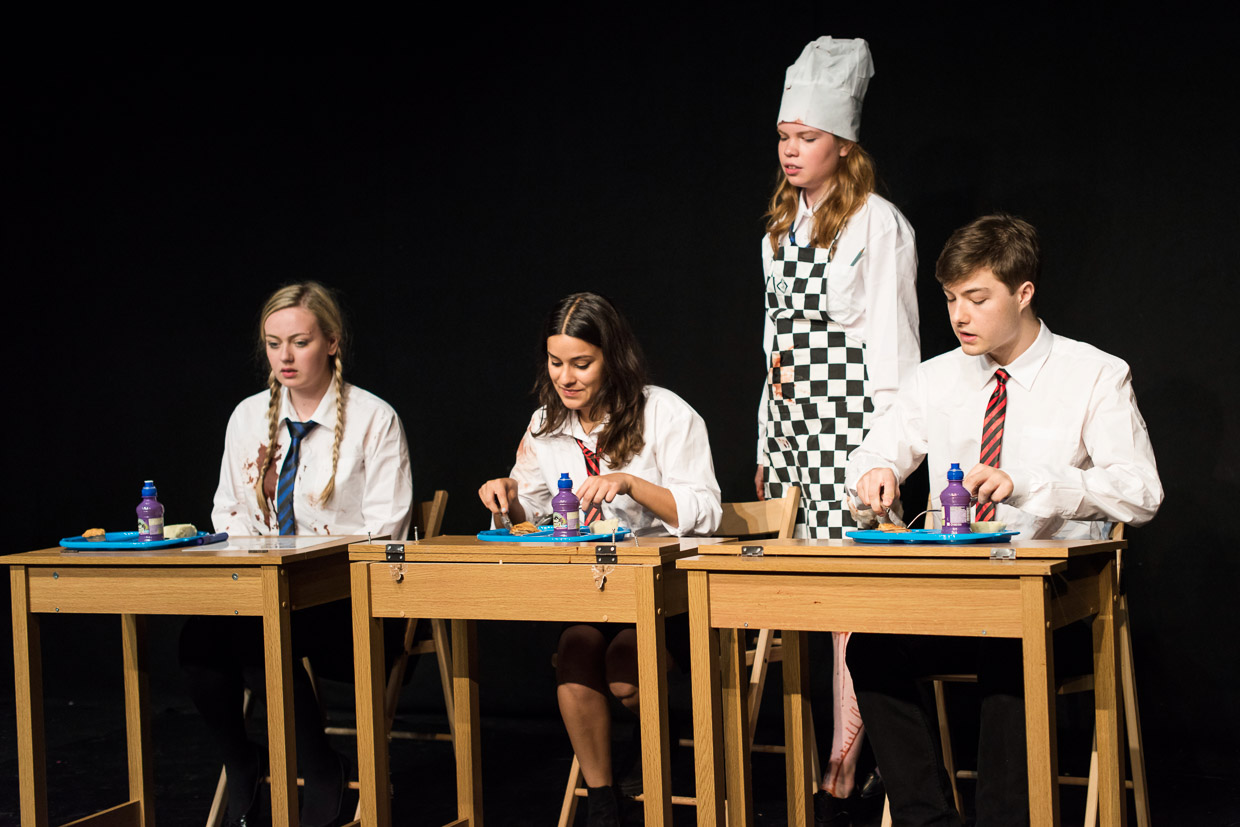
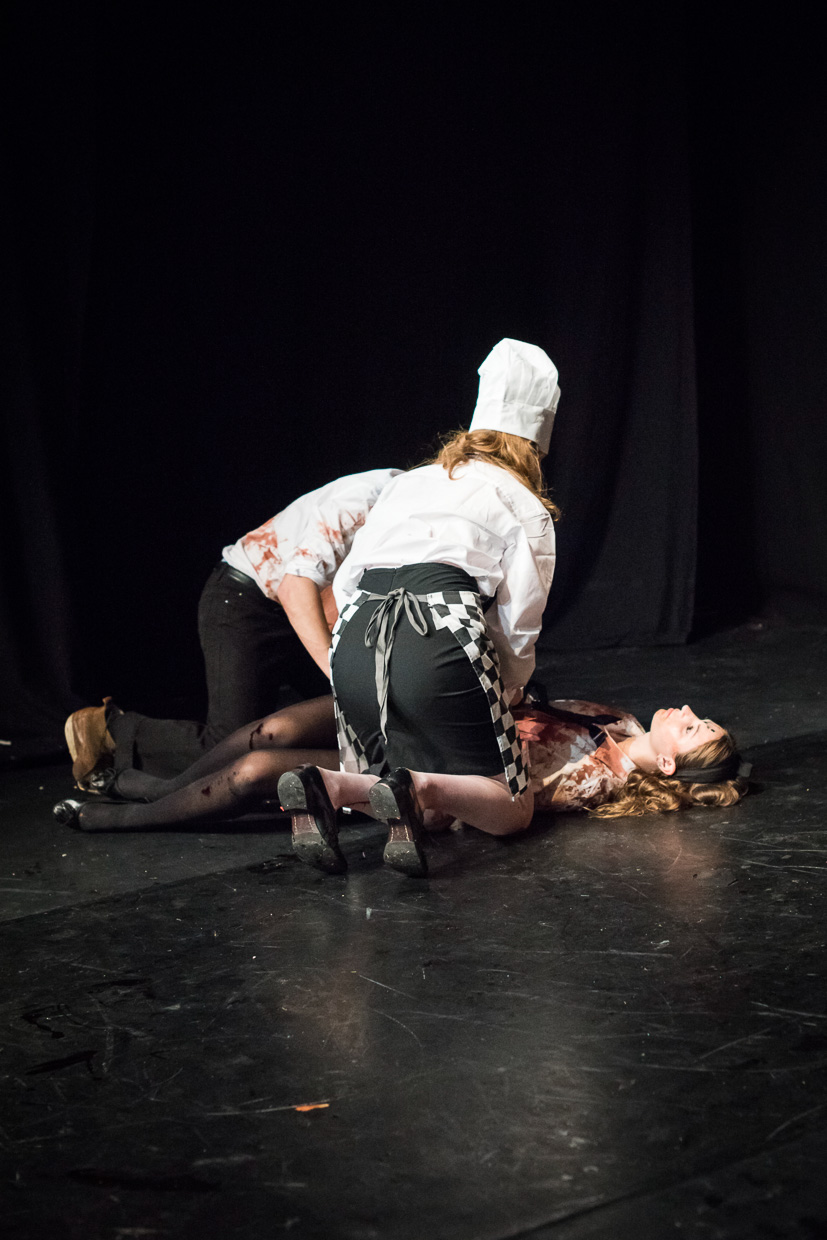
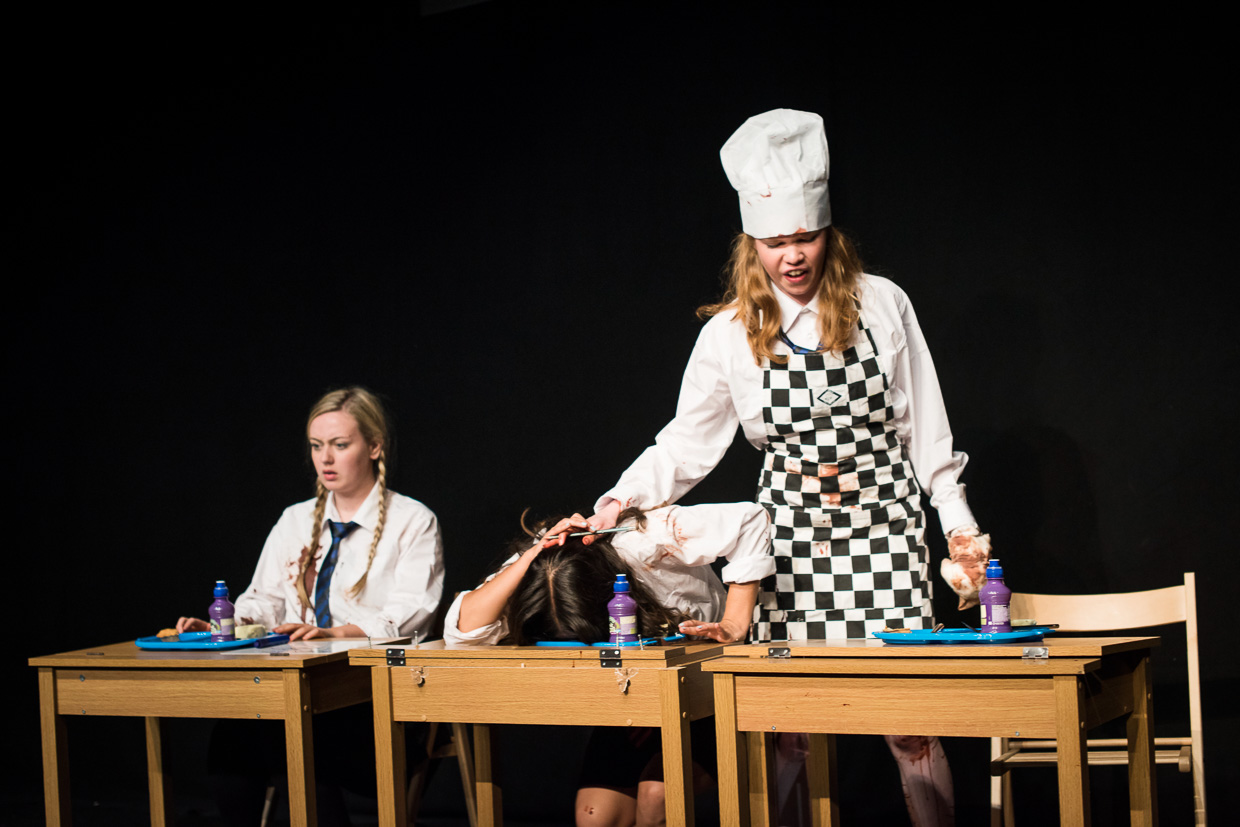
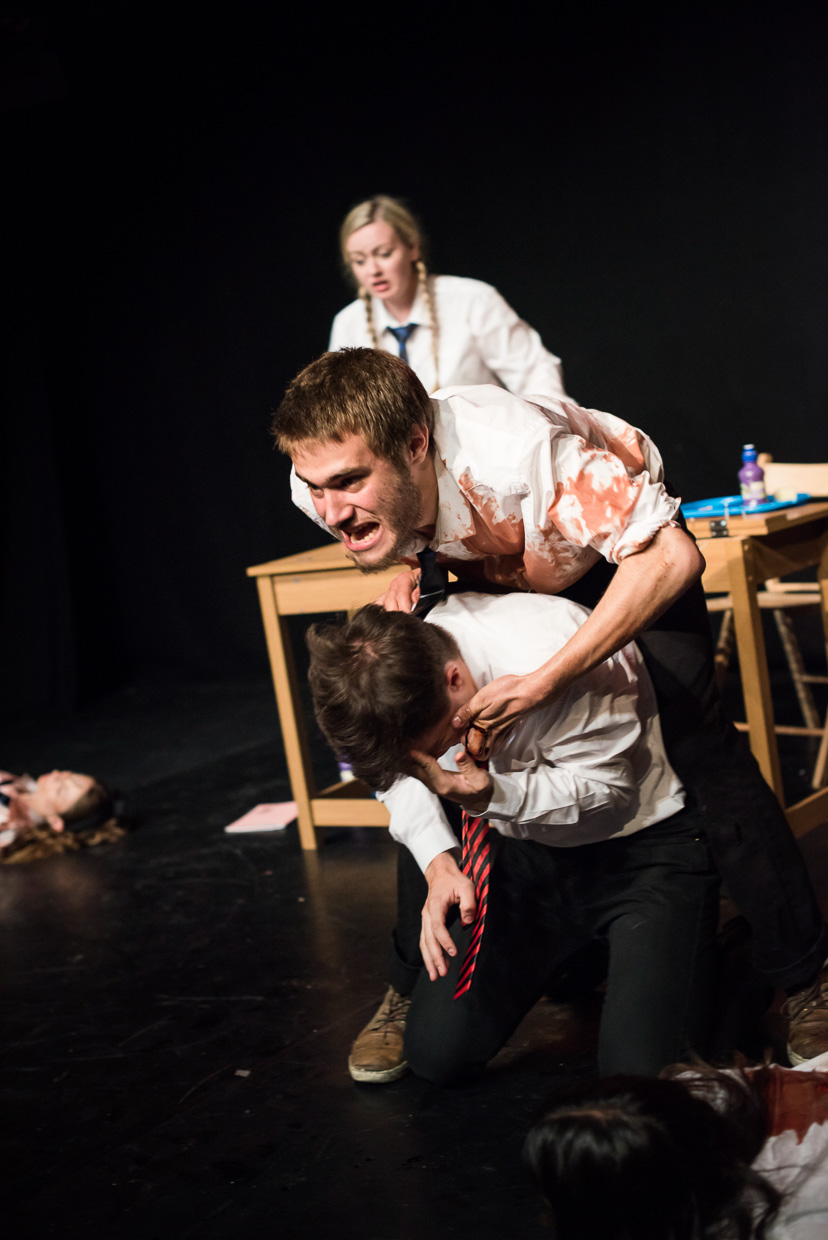
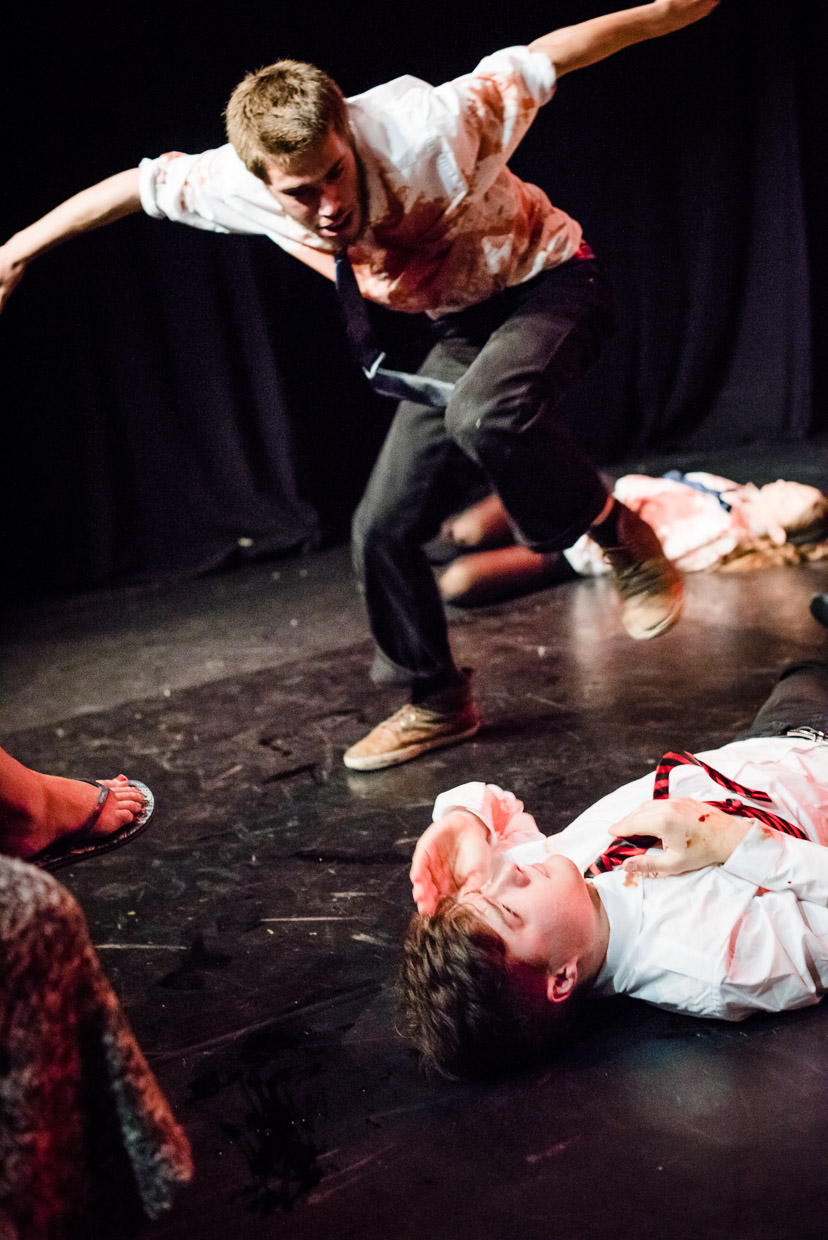
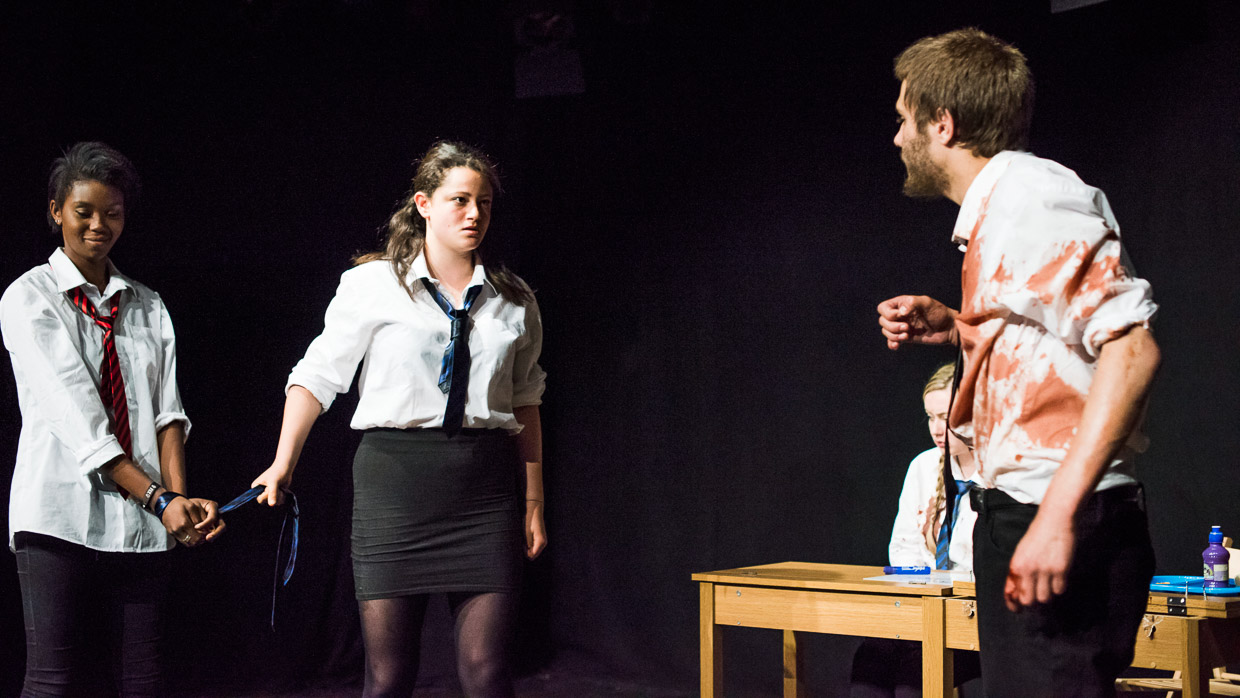
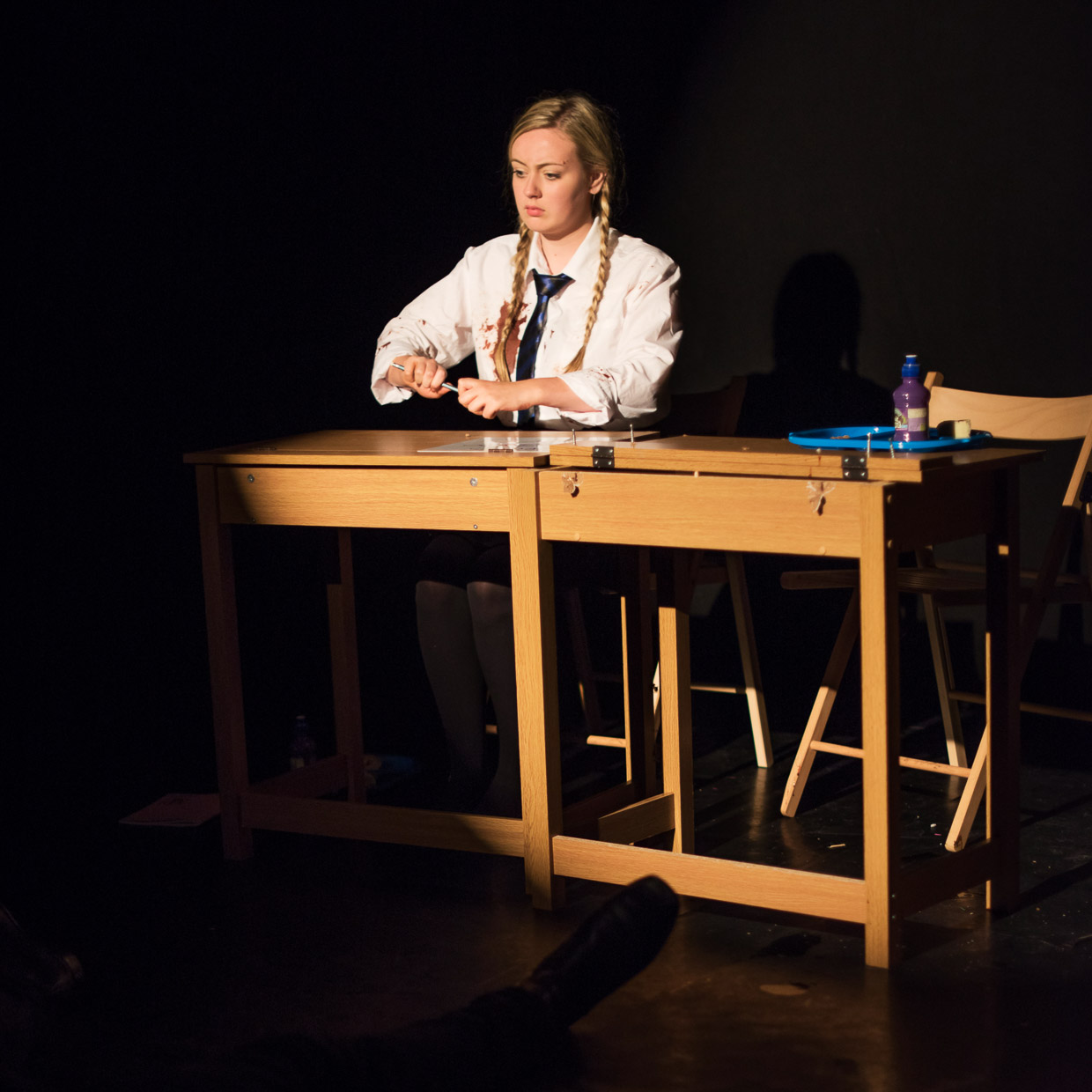
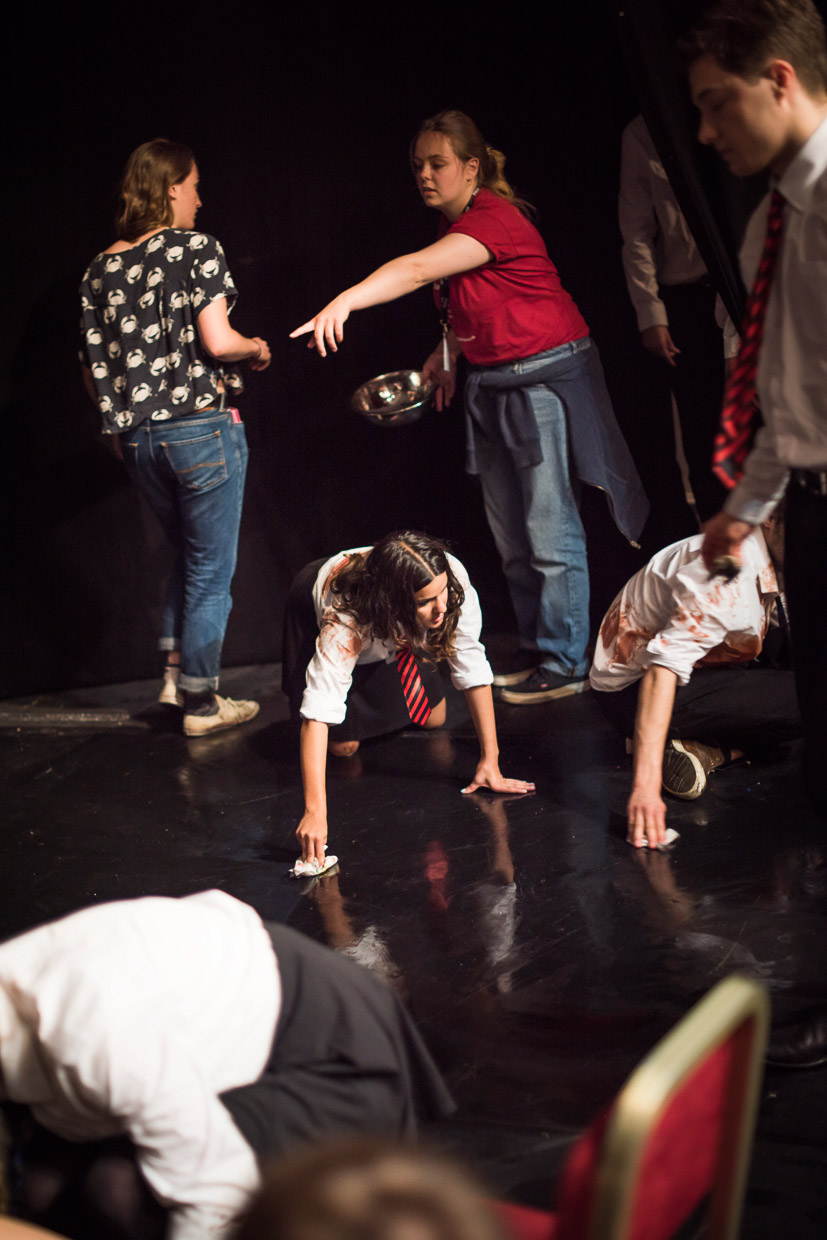
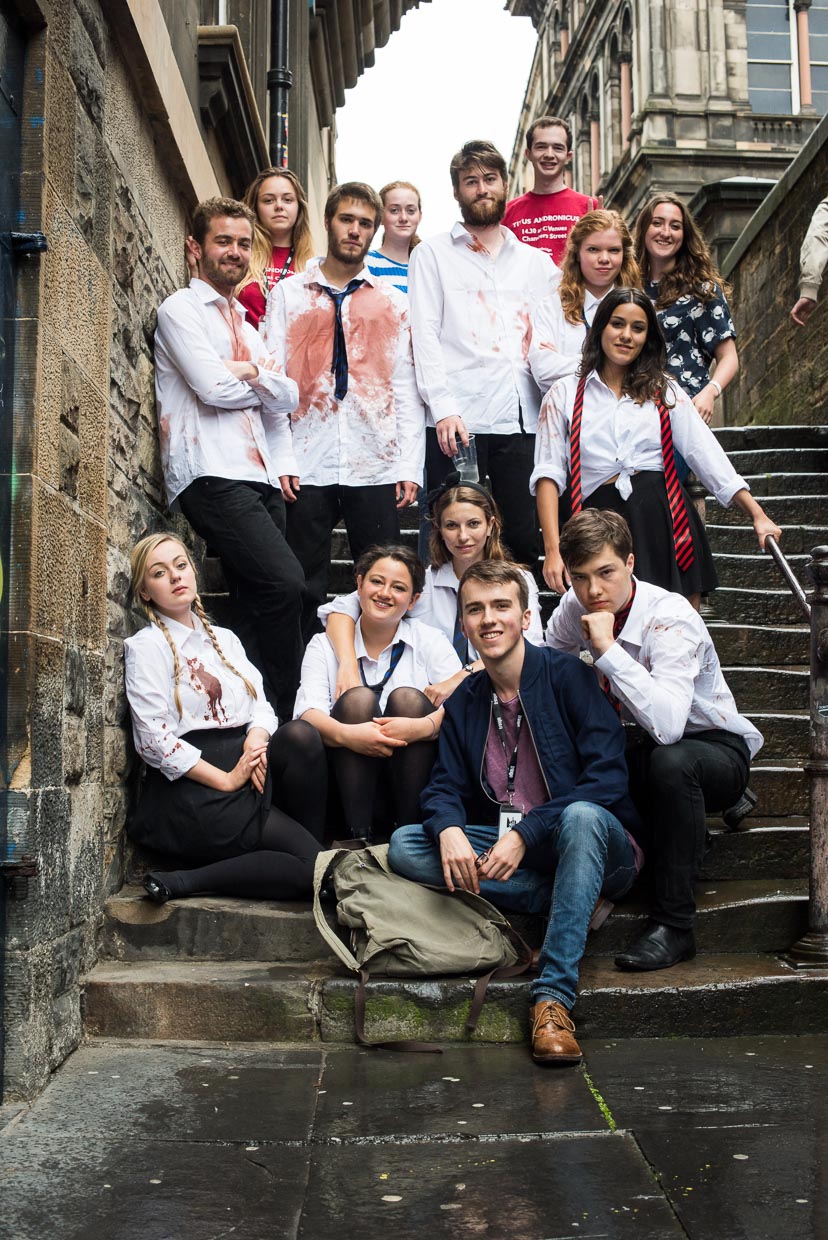
Read Kate Marston’s account of the Fringe originally published on The Fifth Wall.
The Fringe: continuously fresh impulses
When searching for a hot pot of creativity, energy and thirst for all things (ALL THINGS) dramatic, there’s no place like the Edinburgh Fringe Festival. The word ‘fringe’ is routed from the Latin ‘fimbria’ meaning fibres or threads’, and it is this image of uncountable filaments that springs to mind when reminiscing about my own Edinburgh experience, where 50, 549 performances, 3,314 shows and 313 venues thread together to form this artistic phenomenon.
The mass spectrum of standard and style means that spectating is always an adventurous activity… an activity that I endeavoured to pursue at least three times a day in-between performances of my own 2:00pm show, Titus Andronicus. To those living outside the Edinburgh bubble, the daily prospect of running between venues, with half an eye on your watch and half an eye on Google Maps, dodging restless and tired taxi drivers, may seem a little full on if not completely chaotic. And yet, when you’re living amongst fifty, five hundred other performers, any alternative feels ludicrous. Of course, the relentless cycle of viewing and performing (sometimes sleeping, but not always) comes with its standard peaks and troughs. The experience everyone got was fantastic; each day was an opportunity to take risks while experiencing the surprising shifts in energy and tone that scenes could take. It was equally enjoyable to see other shows do the same thing. To watch the same show at the beginning and end of the Fringe, revealed just how much would change in the course of three weeks. One show underwent the extreme process of not only cutting various scenes and characters, but also actually re-casting as the run went on! Commenting on the wonders of the festival, David Hayman stated that the Fringe ‘gives breaks to young artists and young performers… you can be experimental, you can be dangerous’ and he’s absolutely right. This year’s pick of the fringe (my pick of the fringe) was the all female Titus Andronicus. A cast of twelve women demonstrated how the sex of actors is completely irrelevant when the standard of acting, story telling and text interpretation is original, and in tune with every member of the strong ensemble. The completely white set paired with the use of red paint as blood made their setting timeless, conveying how the story of revenge and familial love is one that exists through the ages; they broke down the barriers gender and its social associations, presenting instead, the actions of humanity as a whole.
Of course, on the other end of the experience spectrum, everyone begins to approach the issue of money – or rather, a complete lack of it. As a student company, keen to test stamina and learn from what others have to offer, this dangerously ‘experimental’ work doesn’t result in a shed load of surplus, but rather, a shed load of spending. As a Cambridge group, we were lucky. Whilst living conditions were testing, the hilarity of sharing a three person flat with a cast of fifteen was generally more fun than frustrating. As for the show budget, our producers were able to access enough funding to provide a sparse but effective set and buy the correct ingredients to concoct fake blood, blood and more blood. More importantly, the limiting set-up of fringe productions enforces one fundamental objective in theatre: to activate and stir the imagination. Ornate costume and striking sets contribute very little to a narrative if the players aren’t engaged with the world of their show. Thus, the minimalistic framework puts pressure on the performer to suspend the imaginative faculties of their audience, to transport and sustain attention without relying on flashy lights or the fancy fumes of stage smoke, achieving it instead with tight and clear story telling. The minimal set-up is also a crucial practicality. The average ‘get-ins’ and ‘get-outs’ range from about ten to twelve minutes, so there simply isn’t time to faff about with dismantling a carefully crafted set. Our show was on the whole, fairly efficient at dealing with this rapid turn over… or at least, we would have been, were it not for our (excessive) use of stage blood.
It has to be said, our stage managers were highly skilled at concocting sickeningly convincing red substance…it dribbled, trickled and was a satisfyingly oozy substance. And yet, the secret ingredients of this fabulously dramatic stuff led to the stage floor being drenched in a sticky, squelchy something for the remainder of the show and indeed, day. Did we mind? Hell no. We loved that the progression of the play led to the gradual massacre of the floor as well as the characters. Did the Chinese dance troop who performed immediately after us mind? Hell yes. Safe to say our wondrous stage managers had to head back to the blood-making lab after week one to formulate a slightly less sticky something; if one show caused delays, the delay then puts pressure on the timings for every other show throughout the day, to the point where a cancellation could be the result of careless stage-craft.
In spite of the technical difficulties, our Edinburgh run went fairly smoothly. As an aspiring actor, one of the fears I face about the industry is the task of keeping a show fresh with every performance. Maybe it’s because we were performing Shakespeare, maybe it’s because we were lucky with our audiences, who were generally large and animated enough to provoke an energized show, or maybe it’s because we introduced little cast games, like emphasising a particular characteristic i.e. childishness, flirtiness in every show, but I personally never tired of the story we were telling. Despite listening to the same words day after day, very often spoken with the same inflection and accompanied by the same gestures, the script never felt worn. I genuinely heard something different with every performance, felt different impulses to speak and was surprised at how emotion could be triggered in different ways.
This was a massive relief, not least because the show didn’t feel synthetic, but because I learnt that theatrical stamina isn’t just about conjuring enough energy to excite or captivate audiences, it’s about generating continuously fresh impulses, to listen and interact with new objectives, allowing the thoughts to be spontaneous in spite of their predictability. I don’t for a second pretend that I or the cast have this technique ‘down to a T’, we probably don’t even come close… but if my experience at the Fringe taught me anything, it’s that some actors do, and in my opinion, that’s when theatre is at its most exciting and it’s what all theatre should aspire and inspire to do.
Kate Marston
Cast
Titus – Kay Dent
Tamora – Nisha Emich
Lavinia – Kate Marston
Aaron – Lola Olufemi
Marcus – Lauren Brown
Saturninus – Seth
Bassianus – Avigail Tlalim
Chiron/Martius – Jerome Burelbach
Demetrius/Quintus – Matt Bradley
Lucius – Joe Spence
Production Team
Producer – Jack Rowan
Director – Greg Forrest
Stage Managing Assistant Producer (SMAP) – Louisa Dales
Technical Director – Catja Hamilton
Assistant Producer – Freya Sanders
Assistant Director – Isaac Jordan
Publicity Designer – Hannah Taylor
Photographer – Johannes Hjorth
Be First to Comment